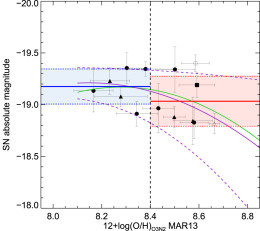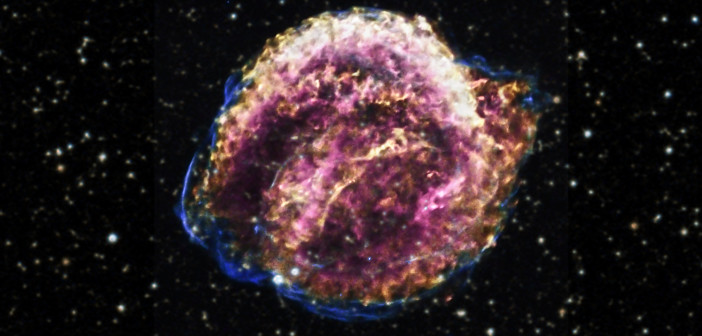Type Ia supernovae are known as “standard candles” due to their consistency, allowing us to measure distances based on their brightness. But what if these explosions aren’t quite as consistent as we thought? Due scientific diligence requires careful checks, so a recent study investigates whether the metallicity of a supernova’s environment affects the peak luminosity of the explosion.
Metallicity Dependence?
Type Ia supernovae are incredibly powerful tools for determining distances in our universe. Because these supernovae are formed by white dwarfs that explode when they reach a uniform accreted mass, the supernova peak luminosity is thought to be very consistent. This consistency allows these supernovae to be used as standard candles to measure distances to their host galaxies.
But what if that peak luminosity is affected by a factor that we haven’t taken into account? Theorists have proposed that the luminosities of Type Ia supernovae might depend on the metallicity of their environments — with high-metallicity environments suppressing supernova luminosities. If this is true, then we could be systematically mis-measuring cosmological distances using these supernovae.
Testing Abundances

Supernova brightnesses vs. the metallicity of their environments. Low-metallicity supernovae (blue shading) and high-metallicity supernovae (red shading) have an average magnitude difference of ~0.14. [Adapted from Moreno-Raya et al. 2016]
Moreno-Raya and collaborators used spectra from the 4.2-m William Herschel Telescope to estimate oxygen abundances in the region where each of these supernovae exploded. They then used these measurements to determine if metallicity of the local region affects the luminosity of the supernova.
Determining Distances
The authors find that there are indeed differences in peak supernova luminosity based on metallicity of the local environment. Their observations support a trend in which more metal-rich galaxies host less luminous supernovae, whereas lower-metallicity galaxies host supernovae with greater luminosities — consistent with theoretical predictions.
This observational confirmation suggests that the metallicity of the progenitor may well play a role in peak supernova luminosity and, as a result, the distances at which we estimate they exploded. This systematic effect can, however, be easily corrected for in the distance-estimate procedure.
As the number of known supernovae is expected to drastically increase with the start of future large surveys such as the Large Synoptic Survey Telescope (LSST) or the Dark Energy Survey (DES), supernova distance measurements will soon be dominated by systematic errors rather than statistical ones. Correctly accounting for effects such as this apparent metallicity-dependence of supernovae continues to be important for accurately determining distances using Type Ia supernovae as indicators.
Citation
Manuel E. Moreno-Raya et al 2016 ApJ 818 L19. doi:10.3847/2041-8205/818/1/L19

3 Comments
Pingback: Distancia a las supernovas Ia « SEDA / LIADA
Pingback: El brillo de las supernovas de tipo Ia - Naukas
Pingback: El brillo de las supernovas de tipo Ia | NUEVAREGION.COM paz y no violencia, actualidad, Rosario San Lorenzo